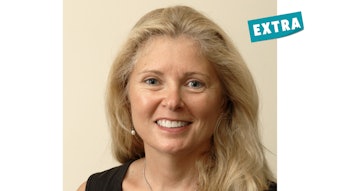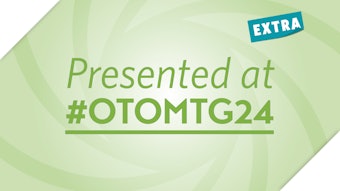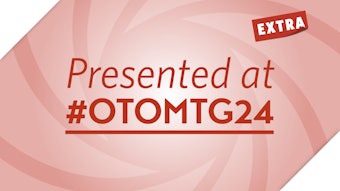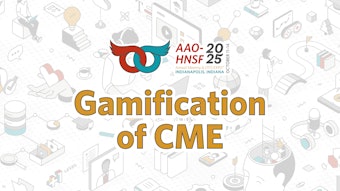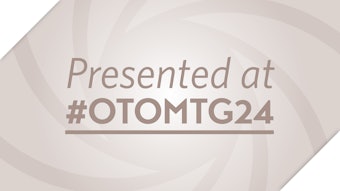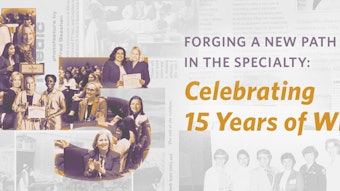Turn Down the Volume
Simple guidelines to share with your patients that can help protect hearing in our communities.
Samuel A. Spear, MD, and John Li, MD, on behalf of the Otology and Neurotology Education Committee*
(See author’s disclosures at the end of this article.)
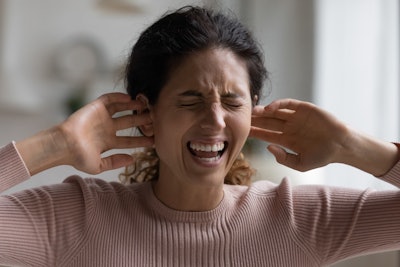
The Consequences of Excessive Sound
Loud music may energize some, but it comes with significant risks:
- Hearing Loss: Noise above 85 dB can permanently damage inner ear hair cells, leading to mild, moderate, or severe hearing impairment.
- Sudden Deafness: Even a single exposure to noise over 120 dB can result in permanent hearing loss.
- Hyperacusis: Noise trauma can cause painful sensitivity to sound, much like a bruise causing tenderness.
- Tinnitus: Persistent ringing, buzzing, or phantom noises can torment individuals, severely affecting their quality of life.
- Heart Issues: Low-frequency bass vibrations can cause arrhythmias, including skipped beats, tachycardia, or even, in rare cases, sudden death.
For many, excessive volume in these environments detracts from the experience, making it uncomfortable or even painful. Earplugs are a common solution for those who wish to protect their hearing, but they are inconvenient and often breed resentment. This frustration is compounded by the fact that a simpler solution—lowering the volume—would eliminate the need for earplugs altogether.
A Widespread Concern
Contrary to the belief of some event organizers, excessive volume is not a minor issue. Informal surveys indicate that over 50% of attendees often feel the music is too loud, while none feel it is too quiet. Some report receiving noise alerts from devices like Apple Watches during events.
Those 40 years or older are particularly sensitive to loud sounds. While the Occupational Safety and Health Administration (OSHA) sets workplace noise limits at 85 dB,1 these guidelines prioritize industrial productivity over individual safety. OSHA acknowledges that even at this threshold, 8% of workers will suffer hearing loss over their careers.2,3 At 90 dB, that figure rises to 25%.2,3
Newer guidelines based on the University of Michigan Apple Hearing Study4 warn against exposure to sounds above 80 dB and actively encourage users to limit their noise exposure.5 This aims to protect everyone, including more vulnerable populations such as infants and seniors.
Why the Resistance?
Despite mounting evidence of harm, many venues and organizers resist turning down the volume. Loud music is often seen as part of the brand, aiming to create an immersive experience that draws people in. Staff members sometimes privately admit that they, too, find the music too loud but feel powerless to address what has become a “sacred cow.”
This resistance mirrors other cultural trends. For example, excessive salt was once considered essential for flavor, but its role in hypertension and heart disease has led to widespread moderation. Similarly, sunbathing was once popular until the connection to skin cancer became undeniable. Now that we understand the risks of loud music, it’s time to adopt healthier practices for the sake of our hearing.
Recommendations for Change
Current sound levels at many events often reach 95 dB, with peaks as high as 106 dB. To protect hearing and wellbeing, venues and organizers should consider the following:
- Follow Newer Guidelines: Keep sound levels between 75–85 dB, and avoid peaks above 90 dB. This range is loud enough to be heard but far safer for everyone.4
- Balance Sound: Ensure even distribution of sound to eliminate “hot spots” where the volume may feel especially overwhelming.
- Heed Noise Alerts: Pay attention to warnings from devices like Apple Watches, which are designed to alert users to dangerous noise exposure.
These steps are not just about preventing complaints but about safeguarding public health.
A Call for Compassion
Excessively loud music is not merely an annoyance, it is a health hazard. Many who experience discomfort remain silent, feeling ignored or marginalized when they do speak up. Others quietly leave events altogether. Earplugs, while helpful for some, are not a long-term solution and shift the burden onto the individual rather than addressing the root problem.
As stewards of public wellbeing, concert venues, DJs, and event organizers have a responsibility to create environments that are welcoming and safe for all. A simple quarter turn of the volume knob can make events more inclusive, ensuring everyone, young or old, can participate comfortably.
Author disclosures: This article was written as an original piece by the authors. ChatGPT-4-turbo was used to edit for grammar, audience, and length.
References
- See OSHA regulation 1910.95(c)(1) available at: https://www.osha.gov/laws-regs/regulations/standardnumber/1910/1910.95
- Noise Exposure: Explanation of OSHA and NIOSH SafeExposure Limits and the Importance of Noise Dosimetry by Patricia T. Johnson, AuD (2018). Available at: https://thedoctorsearplugs.com/wp-content/uploads/2018/03/White-Paper-PTJ.pdf
- OSHA Technical Manual (OTM) - Section III: Chapter 5, available at: https://www.osha.gov/otm/section-3-health-hazards/chapter-5#appendixe
- University of Michigan Apple Hearing Study, available at: https://sph.umich.edu/applehearingstudy/background.html
- Neitzel RL et al 2022. Toward a better understanding of nonoccupational sound exposures and associated health impacts: Methods of the Apple Hearing Study. J Acoust Soc Am 151, 1476–1489. DOI: 10.1121/10.0009620 Available at: https://doi.org/10.1121/10.0009620
